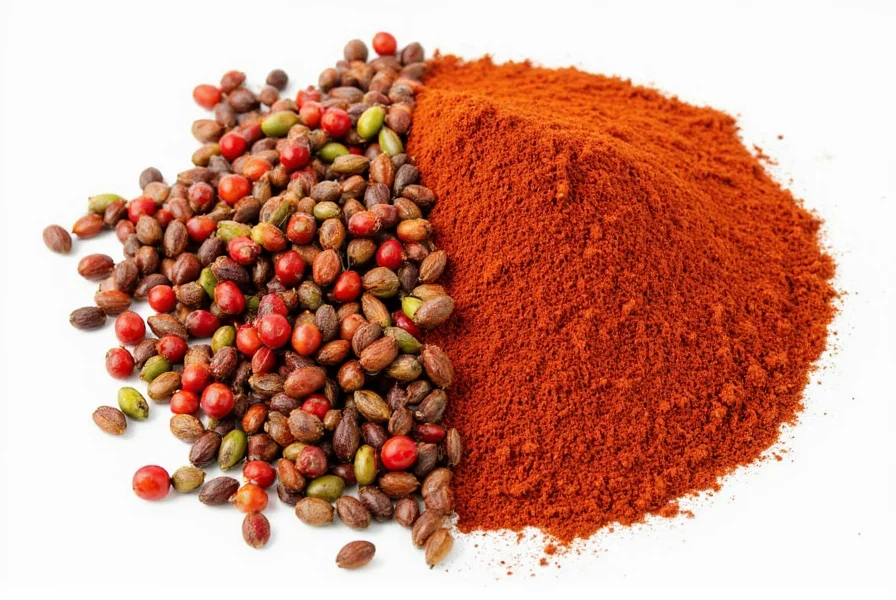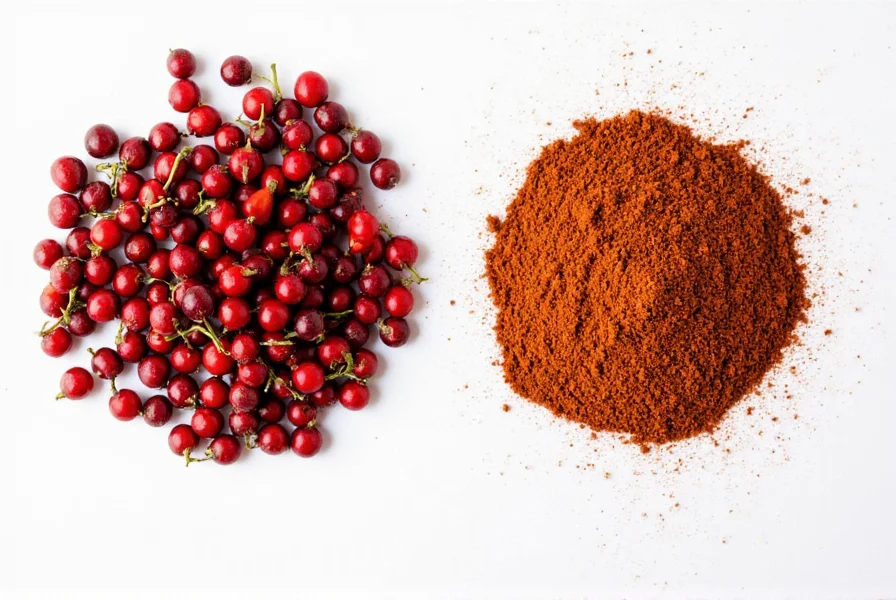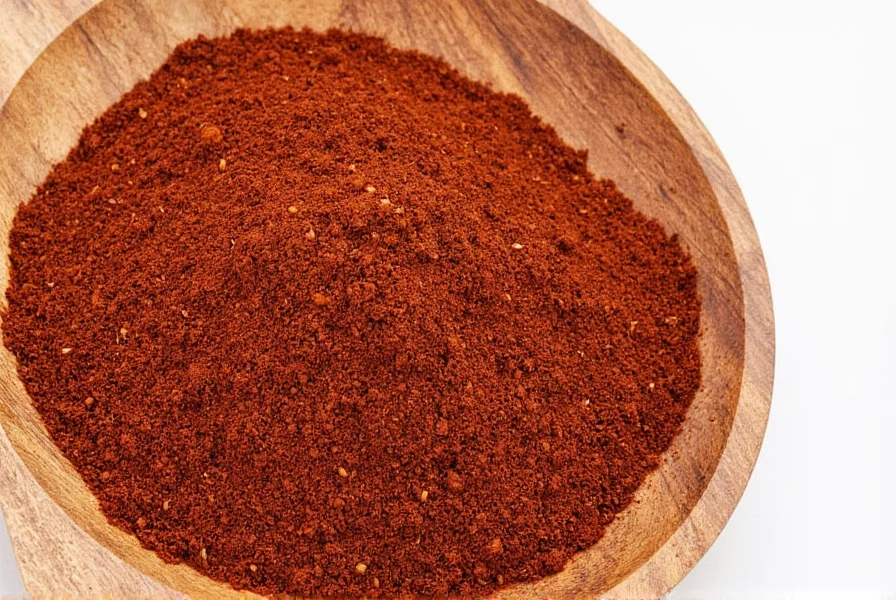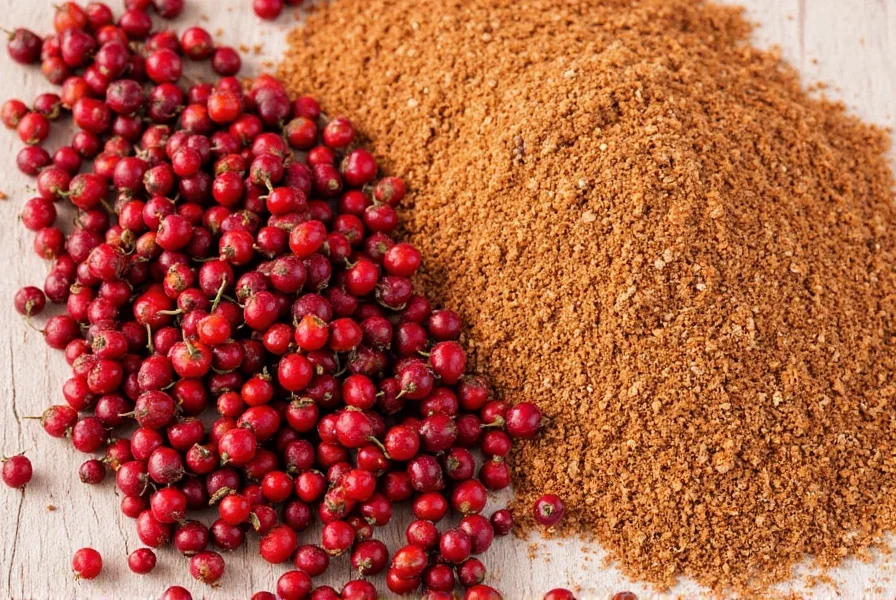Pimento berries and allspice are the same spice. They come from the dried berries of the Pimenta dioica tree, native to the Caribbean. Despite different names, they refer to identical products. This guide clarifies the confusion, provides clear comparisons, and shares practical tips for using them in your cooking.
Table of Contents
- What is Allspice (Pimento Berries)?
- Are Pimento Berries and Allspice Different? The Facts
- How to Use Them in Cooking
- Buying Guide: Choosing Quality
- Storage Tips for Freshness
- Final Verdict: Substitution Guidelines
What is Allspice (Pimento Berries)?
Allspice, also known as pimento berries, is the dried unripe fruit of the Pimenta dioica tree. It’s a single spice with a warm, complex flavor reminiscent of cinnamon, nutmeg, and cloves combined. Native to the Caribbean, Central America, and South America, it’s commonly used in both sweet and savory dishes worldwide—such as jerk seasoning, holiday baked goods, and spiced meats.

Allspice Forms:
- Whole berries
- Ground powder
- Essential oil
Are Pimento Berries and Allspice Different? The Facts
| Feature | Pimento Berries | Allspice |
|---|---|---|
| Origin | Caribbean, Central/South America | Same origin |
| Scientific Name | Pimenta dioica | Pimenta dioica |
| Appearance | Small, dark brown/black berries | Same appearance |
| Flavor Profile | Warm, spicy-sweet, reminiscent of cinnamon/nutmeg/cloves | Same flavor notes |
| Usage | Jerk chicken, stews, pickling, mulled drinks | Savory and sweet dishes |
| Common Names | Pimento, Jamaica pepper | Allspice, myrtle pepper |

There is no difference between pimento berries and allspice—they are the exact same spice. The confusion arises from regional naming: "pimento" is often used in Latin American contexts for the whole berries, while "allspice" is the standard English term. However, note that "pimento" can also refer to sweet red peppers (like those stuffed in olives) in other contexts, so always check the context. For spices, pimento berries = allspice berries.
How to Use Them in Cooking
Whether labeled pimento berries or allspice, this spice works beautifully in both sweet and savory dishes. Here are creative ways to use it:
1. In Baking
Add ground allspice to pumpkin pies, gingerbread cookies, or spice cakes. Its warmth enhances sweetness without overpowering. Try substituting cinnamon with allspice in apple crisp for a unique twist!

2. In Savory Dishes
- Jerk Seasoning: A staple in Jamaican jerk marinades. Combine with thyme, scotch bonnet, garlic, and soy sauce for an authentic rub.
- Stews and Braises: Whole berries infuse depth into slow-cooked dishes like oxtail stew or beef pot roast.
- Pickling: Add a few whole berries to homemade dill pickles or spiced vinegar for extra complexity.
3. In Drinks
Mull wine or cider with allspice, cinnamon sticks, orange peel, and cloves for a cozy winter warmer. Or add a pinch to hot cocoa for a surprising but delicious kick.
Buying Guide: Choosing Quality
Not all allspice is equal. Here’s how to pick the best:
For Whole Berries
- Fragrance: Should have a strong, aromatic scent. Faint or dusty smells indicate old stock.
- Color: Look for deep brown to black berries. Avoid pale or broken ones.
- Texture: Berries should feel firm, not soft or crumbly.
For Ground Allspice
- Packaging: Choose opaque, airtight containers to preserve flavor.
- Certifications: Organic or fair trade labels indicate ethical sourcing.
- Brand Reputation: Trusted brands like Penzeys, Simply Organic, and Spice Islands offer consistent quality.

| Product | Features | Best For |
|---|---|---|
| Penzeys Whole Allspice | Highly aromatic, sustainably sourced | Braising, pickling, homemade jerky |
| Simply Organic Ground Allspice | Organic, certified USDA | Baking, seasoning mixes |
| Frontier Co-op Allspice Powder | Eco-friendly packaging, bulk options | Cooking, DIY spice blends |
Storage Tips for Freshness
Keep your allspice fresh with proper storage:
- Air-tight containers: Store in sealed glass jars away from heat and light.
- Cool, dark place: A pantry or cabinet is ideal—avoid near ovens or sunlight.
- Shelf life:
- Whole berries: Up to 3–4 years
- Ground allspice: 2–3 years

Pro Tip:
Grind whole berries yourself for maximum potency using a spice grinder or mortar and pestle.
Final Verdict: Substitution Guidelines
Since pimento berries and allspice are identical, they can be used interchangeably based on form:
- Whole vs. Ground: Whole berries need grinding for baking or dry rubs. Ground allspice won’t infuse flavor the same way in long-cooked dishes where whole berries are used.
- Substitutes: If unavailable, combine equal parts cinnamon, nutmeg, and cloves—but nothing matches true allspice’s unique flavor.
Bottom Line:
Next time you see "pimento berries" or "allspice" on a label, know they’re the same spice. Just check the form (whole or ground) and store properly to maintain freshness and potency.
Ready to Spice Things Up?
Grab high-quality allspice and experiment with bold new flavors. From jerk chicken to mulled cider, this versatile spice has more to offer than you think!










 浙公网安备
33010002000092号
浙公网安备
33010002000092号 浙B2-20120091-4
浙B2-20120091-4